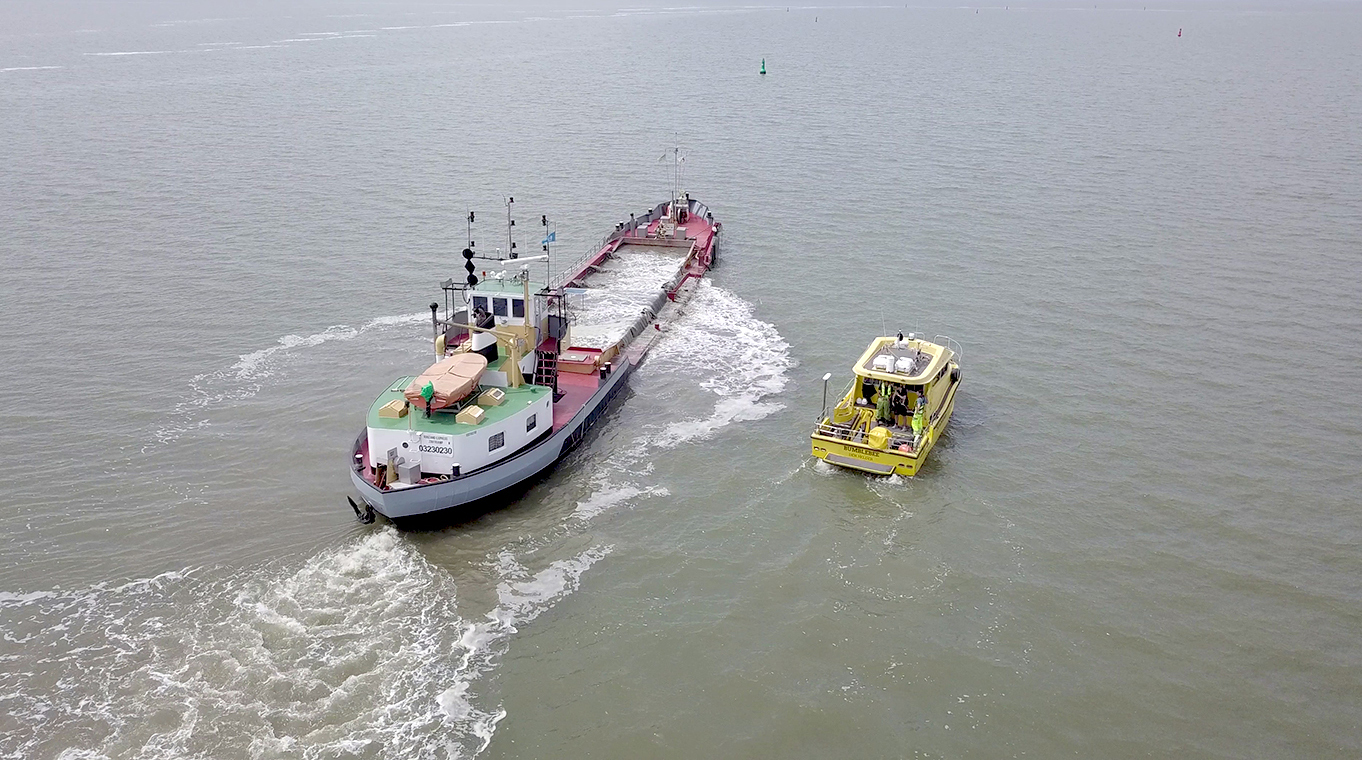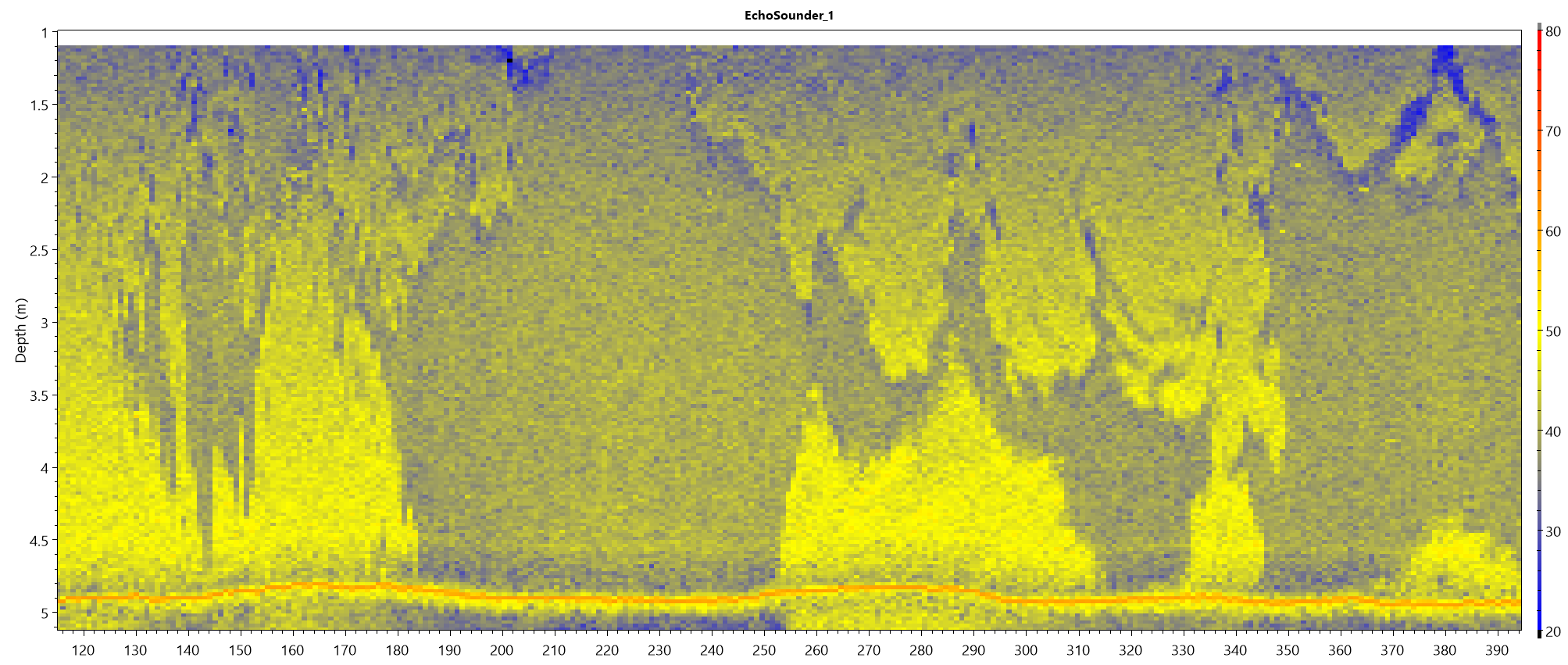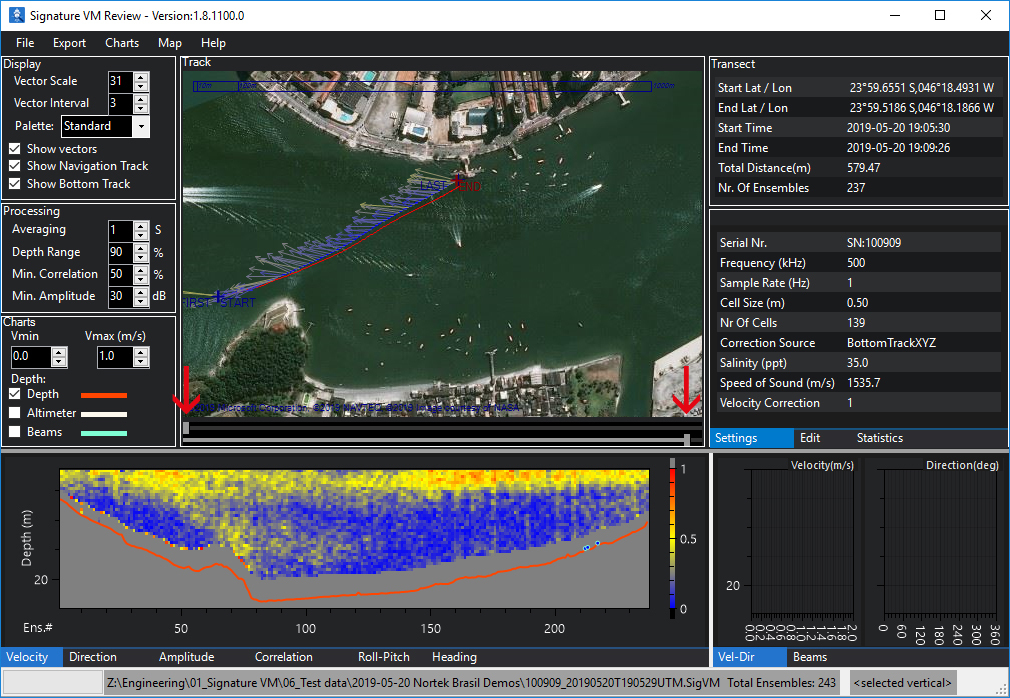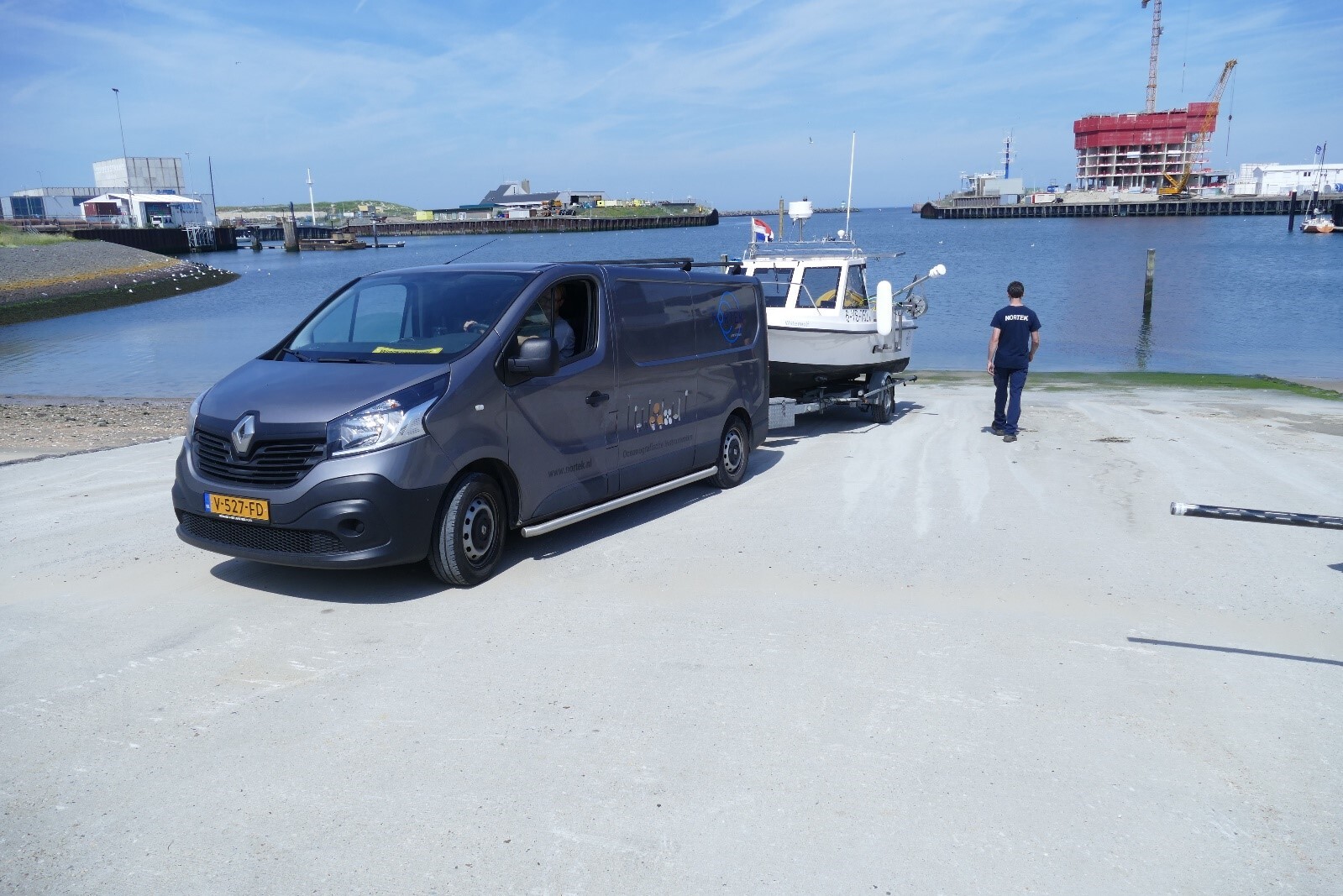
High-res echo profiles and other updates to Nortek’s vessel-mounted system
The major new feature of our recent Signature VM update is the echosounder. This is particularly relevant for users performing coastal sediment studies or those interested in boundary layers, who previously had to cope with data of a rather poor resolution.
When performing sediment studies, users usually missed the most important part of the vertical profile: the profile close to the bed. What users ideally would like to have is a high-resolution echosounder that goes all the way from the instrument down to the seabed.
The challenge is that standard ADCPs have been designed for current profiling in the water column slightly above the ocean floor, and the slanted beams do not give results close to the bed. The vertical resolution is tailored to current profiling and thus needs a certain cell size to be accurate.
How Nortek has improved hi-res echo profiles
To solve this problem, Nortek uses the fifth beam on Signature ADCPs to provide a high-resolution echo profile all the way down to the bed. The resolution can be as fine as 1 cm due to sophisticated signal-processing techniques. The data can be recorded and displayed using two channels. These two channels can either be set to a standard configuration, or alternatively one can be set for pulse compression.
The main photo in this article shows a vessel (from our friends at WaterProof) with the Signature VM system surveying close to a dredging vessel that is spilling sediments.
The yellow image below shows the high-resolution echogram, with the water surface reflected at the top of the image and the ocean floor at the bottom. The color scale indicates range-corrected echo strength, with blue signifying that the echo strength is quite weak, and yellow that the echo strength is much stronger.

High-resolution echogram with the water surface reflected at the top of the image and the ocean floor at the bottom.
The data is range-corrected and displayed in the Signature VM acquisition software. The post-process software, Signature VM Review, can display the range-corrected data, and offers the opportunity to select one or more depth layers to be plotted together with the current speed and direction of that specific layer. This may be used for the visualization of relative concentration of dredge plumes, as well as the speed and direction of these. Signature VM Review can also export the raw and range-corrected echosounder data as a MATLAB file.
Depth measurements have improved
In previous versions of the Signature VM software you could experience so-called outliers (data points that are obviously wrong) in the depth estimates, and of course you do not want to see that. Previously we relied mostly on the altimeter (implemented in the vertical beam) for depth estimates, and altimeters generate an outlier every now and then.
In the latest version we combine the depth estimates from the altimeter with depth estimates from the slanted beams to obtain more accurate measurements.
Improved functionality in the Signature VM Review software
Users can now use a so-called “slider” in the interface to more easily select a survey track in the Signature VM Review software.
Previously, selecting a track in Signature VM Review was somewhat difficult, and pointing your mouse at the right spot in longer travels was not that easy. This task should now be smooth and easy to accomplish. We have added sliders that allow you to select the right section simply by dragging (see the sliders just below the map in the screenshot below).

Signature VM Review software that allows you to process acquired data quickly. Sliders, indicated by the red arrows, have been added to simplify selection of data.
Nortek is running Signature VM demos all over the world
Contact your local Nortek salesperson to find out about upcoming opportunities in your area.
In the next release we will talk about unmanned vessels and long-range current profiling. Stay tuned!

Preparation of a demonstration of the Signature VM in the Netherlands. The vessel is Nortek’s Waterwolf, which we use for tests and demonstrations.